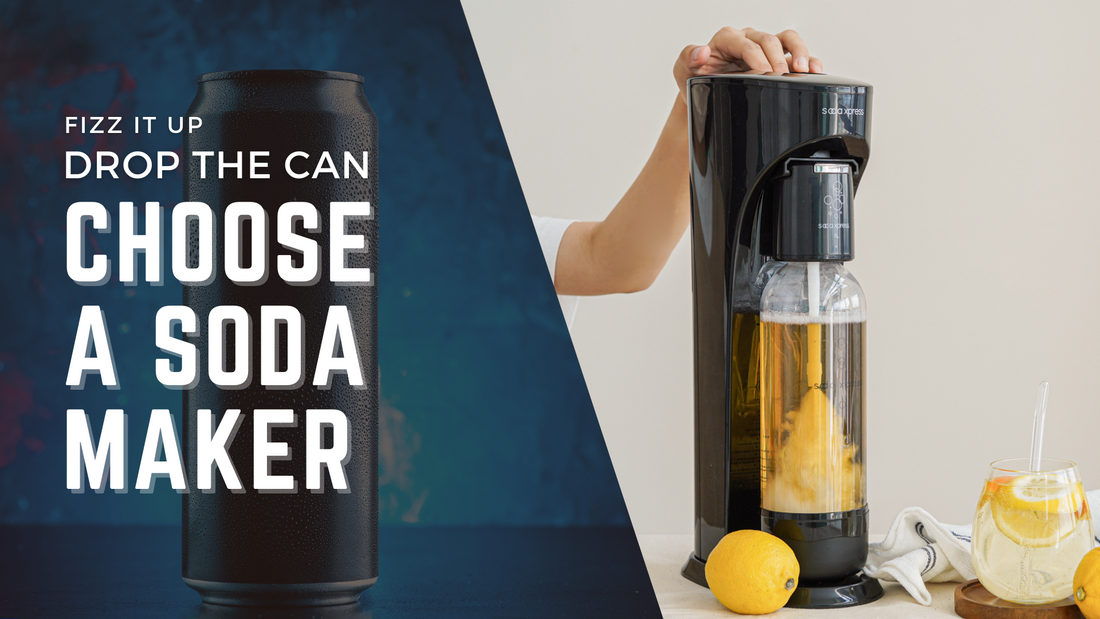
Breaking the Soda Habit: Why Switching to Sparkling Water is a Healthier Choice
Share
Why People Are Addicted To Soda?
Sugar Content: Most sodas are loaded with sugar, which triggers the release of dopamine, the "feel-good" neurotransmitter. This creates a pleasurable sensation, which can lead to cravings and a desire to drink more. The high sugar content can also lead to energy spikes and crashes, making people reach for more soda to restore energy levels.
Caffeine: Many sodas contain caffeine (especially cola-type sodas), which is a stimulant. Caffeine can increase alertness and provide a temporary energy boost, leading to dependency in some people. Over time, the body can build a tolerance to caffeine, meaning a person may need more of it to experience the same stimulating effects.
Habit and Conditioning: Soda is often a part of daily routines or associated with social situations (e.g., drinking soda with meals, at parties, or during breaks). This habitual behavior can make it difficult for people to break free from drinking soda regularly.
Flavor and Sensory Appeal: The sweet, fizzy, and often flavored nature of soda is designed to be enjoyable and refreshing. The combination of sugar and carbonation can make it highly appealing, leading to emotional or sensory cravings.
Marketing and Availability: Soda is heavily marketed, and it's easily accessible, often cheap and convenient. The constant availability of soda in stores, restaurants, and vending machines can make it a default choice when thirst strikes.
Why You Should Switch To Sparkling Water

Reduced Sugar and Calories: One of the biggest benefits of switching to sparkling water is the reduction in sugar and empty calories. Soda can contain anywhere from 25-40 grams of sugar per serving, contributing to weight gain, increased risk of type 2 diabetes, and tooth decay. Sparkling water, on the other hand, is typically calorie-free and contains no added sugars, making it a much healthier choice.
Hydration: Soda is not hydrating because of its sugar and caffeine content, which can act as diuretics and dehydrate the body. Sparkling water, while carbonated, is still a great way to stay hydrated and can provide the same feeling of refreshment as soda without the drawbacks.
Better for Your Teeth: The sugar and acidity in soda can erode tooth enamel, leading to cavities and other dental issues. Sparkling water is much less harmful to your teeth, although it’s worth noting that flavored sparkling waters can still have mild acidity, so it’s best to choose those with no added sugars or artificial sweeteners.
Supports Better Digestion: Some people find that the carbonation in sparkling water can aid digestion, helping to relieve bloating or indigestion. Additionally, drinking water (sparkling or still) helps with overall digestive function and maintains a healthy gut.
No Artificial Additives: Many sodas contain artificial colors, preservatives, and flavorings that are not ideal for long-term health. Sparkling water, especially natural varieties, generally contains no additives, making it a purer option.
Helps Break the Sugar Habit: Replacing soda with sparkling water can help break the cycle of sugar addiction. Over time, the body may adapt to lower sugar intake, and people can experience more stable energy levels and improved mood without the sugar crashes that follow soda consumption.
Variety and Enjoyment: Sparkling water can still be enjoyable and refreshing. Many brands offer flavored sparkling waters (with no added sugar), so you can satisfy your craving for something fizzy and flavorful without the excess sugar. You can also make your own flavored sparkling water by adding fresh fruit, herbs, or a splash of natural juice.
Get On Soda Schedule

Transitioning from soda to sparkling water can take time, especially if you're used to the sweetness and caffeine boost that soda provides. Start by gradually replacing one soda a day with sparkling water, and slowly reduce your soda intake over a few weeks. You may find that your cravings for sugary drinks decrease as your body adjusts.
By making the switch, you’re prioritizing your long-term health, hydration, and well-being. Sparkling water can still offer the satisfying fizzy experience you crave, but without the negative health impacts of soda.


